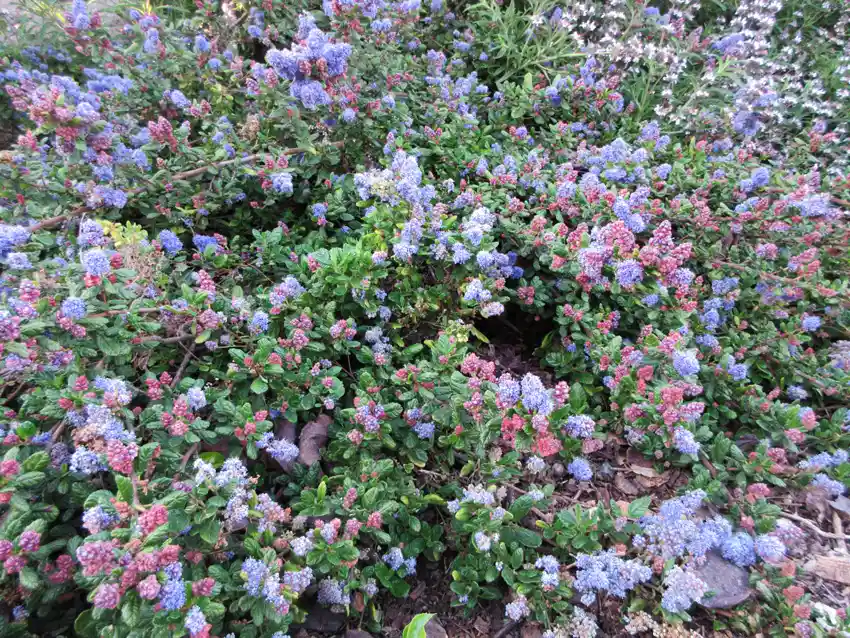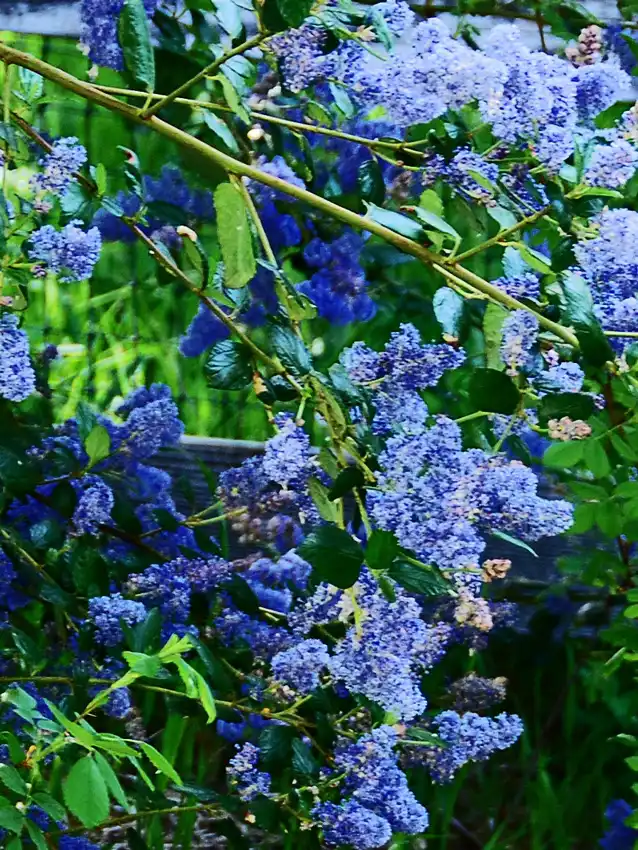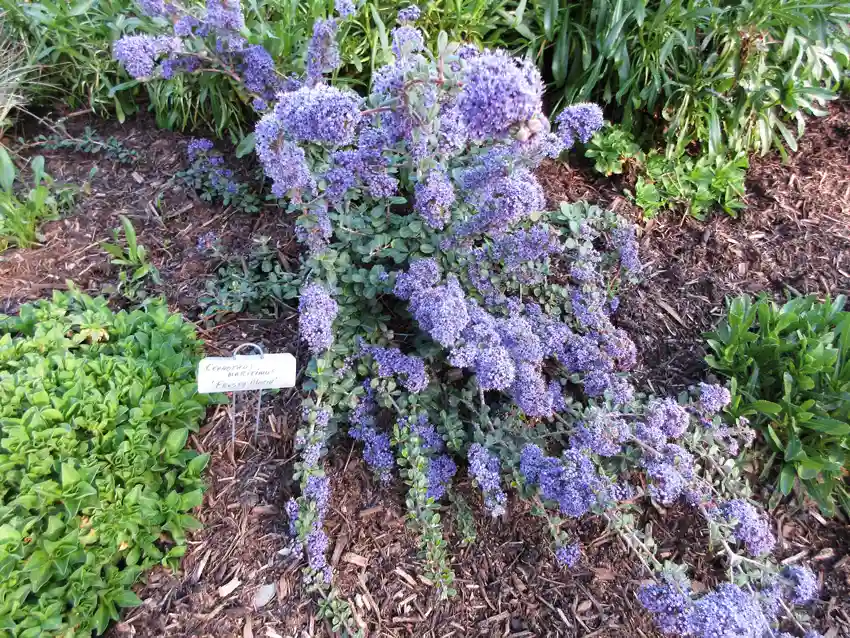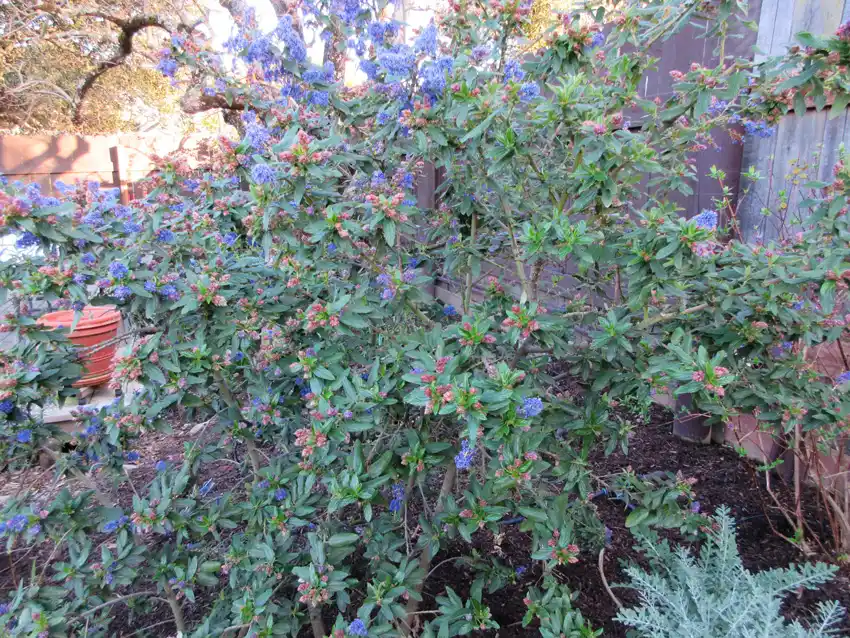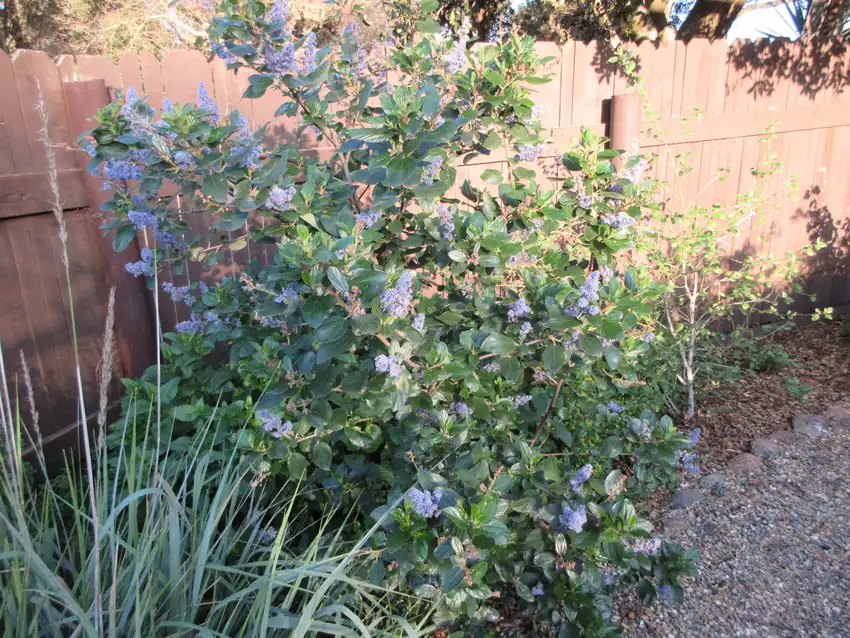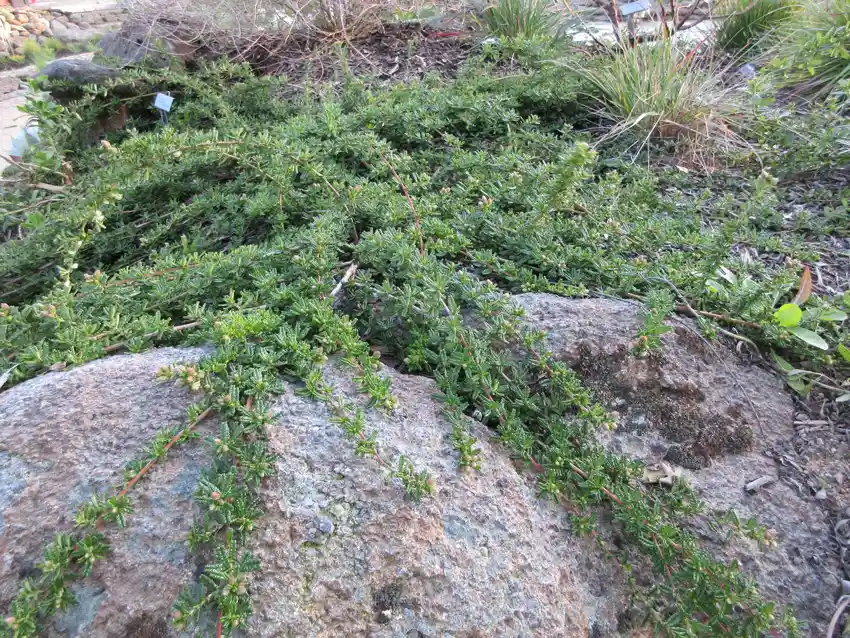There are many species and cultivars of this iconic California native plant which are evergreen, easy and fast-growing, and in all sizes and shapes for a cultivated garden. Flowers are usually blue to purple, but there are hybrids with white flowers also! These plants also offer lots of resources for wildlife: flowers for pollinators, seeds for birds and small animals, shelter and nesting sites.
Ceanothus species are also a larval host plant for several species of butterflies: the Pale Sawllowtail, Echo Blues, Hedgerow Hairstreak, Pacuvius Duskywing, and the California Tortoiseshell. At home Ground our magnificent Ceanothus ‘Antonette’ hosted three broods of California Tortoiseshell larvae last March. We’ll keep our eyes open for them again this year!
Deer do browse the new growth that starts as the rainy season sets in. The new growth is rich in calcium and other minerals which the male deer especially need, since they are growing a whole new set of antlers. Antlers are one of the fastest-growing tissues in the animal kingdom!
Deer are browsers, not grazers, so be sure to protect these broad-leafed plants to get them established. I use a cage, strategically placed fencing, or netting. Ceanothus species with small or prickly leaves are of lessor or no interest to the deer. Ceanothus ‘Concha’ and ‘Blue Jeans’ are medium-sized shrubs with small leaves and lots of flowers. Low-growing species such as Ceanothus maritimus, Ceanothus hearstitorium, and Ceanothus ‘Centennial’ are also less likely to be of interest to the deer. Most Ceanothus species prefer full sun and need little water once established.
One large and fast-growing shrub is Ceanothus ‘Ray Hartman’ which can grow to be more than 12 feet tall. Another is Ceanothus arboreous ‘Cliff Schmidt’. Both these selections have large, lush leaves and can be pruned to a tree form. Both prefer some shelter from hot afternoon sun in inland gardens.


